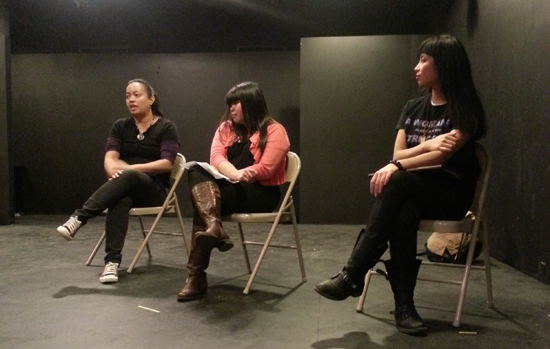
When I was 18, I worked at the Times Square Swatch megastore as a cashier. I was the only Filipino and only Asian there, and once in a while, I would come in with some baon from home for lunch. One night, I had some sort of fish and rice deal courtesy of my mom, which I eagerly dug into—with my spoon and fork. One of my co-workers looked at me with the most puzzled look, as if I was eating duck fetus or something (what was this, Sunday?).
"What?" I said.
"Why in the world are you eating with a fork and a spoon? And where's the chopsticks?" she asked.
This was the single most ridiculous question I'd ever heard, and not because of the (totally forgivable, honestly) cultural misconception about Pinoys and chopsticks. I replied with what I thought was an equally ridiculous question: "You never seen anyone eat with a fork and a spoon? Hahaha."
Hahaha indeed—but the joke was on me. This was my first foray into the world of having to explain eating habits that I assumed were universal. The fork's the broom! The spoon's the dustpan! But as my co-worker started calling the attention of other employees to look at me eating with both basic utensils simultaneously, I began to realize how alien and unique the Pilipino eating style is to the mainstream.
And, as we know, it doesn't just stop with the shovel-spoon. There's kamayan, the hand-eating technique employed by most of the developing world, but which has such a codified set of steps in the Pilipino culture that it might as well be considered an art form. But perhaps more defining is our lack of chopsticks.
Since the Detroit murder of Chinese-American man Vincent Chin in 1982 for being mistaken as Japanese, the countless Asian immigrant communities in America have undergone a reactive transformation, a social merger that has proved less polarizing and, quite frankly, beautiful. The decades since have seen the emergence of the term "Pan-Asianism": No longer are we simply Chinese, Koreans, Filipinos, Vietnamese, etc. in the eyes of mainstream America. We can collectively call ourselves Asian-American, and very proudly. It's something that could only have happened in the environment that the United States creates for immigrant groups. Despite differences between countries that are sometime stark and prejudice-inducing back in the Far Eastern mother continent, the world's largest and most diverse demographic has found a united identity in this term.
For better and for worse. Pan-Asianism has introduced a subconscious sharing of relatively small details with origins in individual cultures. Boba, originating in Taiwan, has become an Asian drink. Lucy Liu, Harry Shum Jr and Andrew Yeun aren't just Chinese and Korean actors, they're Asian. It's become vogue (and then not vogue, and then vogue again) to have Asian Fusion food—an amalgamation of the best things about all these culture's taste buds.
And while much can be said about the Filipino's rising image in this as well as mainstream entertainment's milieu—as dope as it is—it's important to remember and appreciate the little things about Pilipino culture that set us apart. The double utensils, the hands, and the chopsticks.
Well, the lack thereof.
Photo credit: Live in the Philippines




